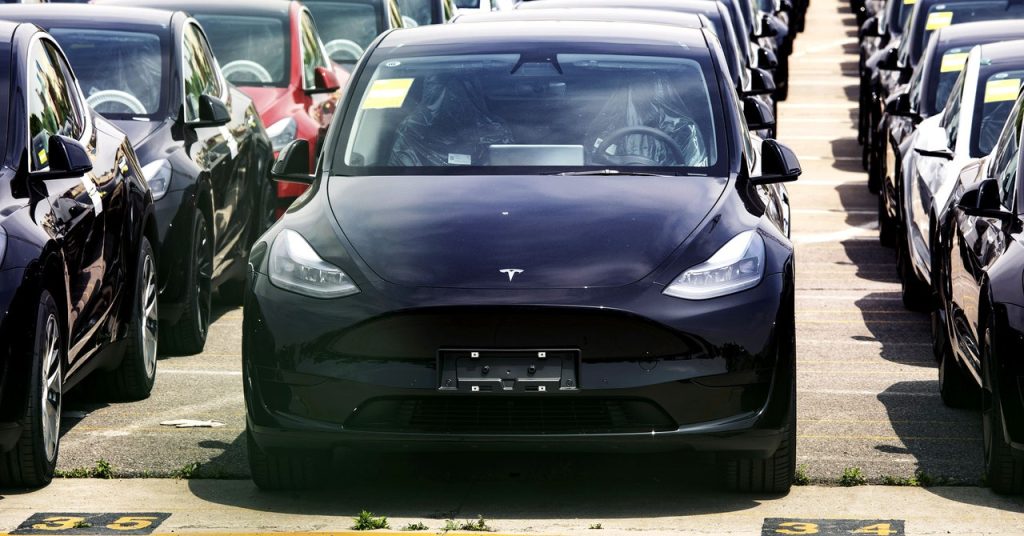Tesla’s Robotaxi Unveiling: A Shift in Strategy
Prepare to mark your calendars: Elon Musk, the CEO of Tesla, hinted this afternoon that his electric vehicle company is fully committed to autonomous vehicle technology. The much-anticipated Tesla robotaxi is set to be unveiled on August 8.
This announcement is considered crucial to the electric automaker’s future, particularly after Musk’s bold claim in 2019 that Tesla would have “over a million Tesla cars on the road with full self-driving hardware” by the following year—a promise that did not come to fruition.
Current State of Tesla’s Autonomous Technology
As of now, Tesla’s driver assistance technology, known as Full Self-Driving, is classified as a “level 2” on the five-point autonomy scale. This means that the car can navigate itself, but only under the supervision of a driver. The latest self-driving software update from Tesla is notable for being the first not labeled as ”beta” by the company.
Criticism and Challenges in the Autonomous Vehicle Industry
Tesla’s driver assistance technology has faced significant criticism from the National Transportation Safety Board, the top transportation safety watchdog in the US. A two-year investigation by the nation’s leading road safety regulator revealed that the development of self-driving vehicles is more challenging than initially anticipated. Today, only a handful of major players remain in the race for self-driving software, despite billions of dollars invested in research and development and millions of miles driven.
Waymo, a Google spinoff, currently offers paid taxi rides in only two cities—Phoenix and San Francisco—despite having driven over 7 million miles. General Motors‘ Cruise division faced a setback when a driverless taxi collided with and injured a pedestrian, leading to a temporary suspension of its paid robotaxi service in San Francisco. If Tesla aims to launch robotaxi service wherever its cars are sold, its plans will be even more ambitious than these competitors who have been tackling the challenge of autonomy for years.
A Shift in Tesla’s Strategy
If Tesla is indeed shifting its focus away from producing a smaller, more affordable vehicle to complete its lineup, it would represent a significant change in strategy. Musk once viewed the “affordable” vehicle as the key to Tesla’s long-term success and its mission to combat climate change caused by internal combustion engines. In his 2006 “master plan,” Musk outlined a strategy to make luxury electric cars and use the profits to invest in the company’s ability to manufacture more affordable cars. However, according to Walter Isaacson’s 2023 biography of Musk, Tesla engineers eventually persuaded Musk to develop a $25,000 car to achieve aggressive growth targets.
When Tesla teased a “next-gen” vehicle in a January earnings call, with production slated for 2025, many assumed that the affordable electric car was finally on the horizon. The timing seemed perfect, as both legacy automakers and emerging Chinese companies like BYD and SAIC Motor have begun to introduce more affordable EVs. Analysts also sensed a growing demand for a new vehicle from Tesla, which hadn’t announced a new model in nearly five years. However, today’s post might signal a reversal in Tesla’s strategy, suggesting that the company has opted for an ultra-ambitious approach to its next car rather than a more natural progression.

6 Comments
Buckle up for a ride into the future, Tesla’s not playing it safe!
Robotaxis by Tesla? Guess it’s time to ditch the driving lessons!
Robotaxis by Tesla, who’s ready to let AI take the wheel?
Robotaxis courtesy of Tesla? Sounds like traffic jams might get a whole lot more interesting!
Tesla’s robotaxi gamble? About time we saw some real innovation in our daily commutes!
Tesla diving into robotaxis, huh? Better hold on tight, it’s going to be a bumpy ride!